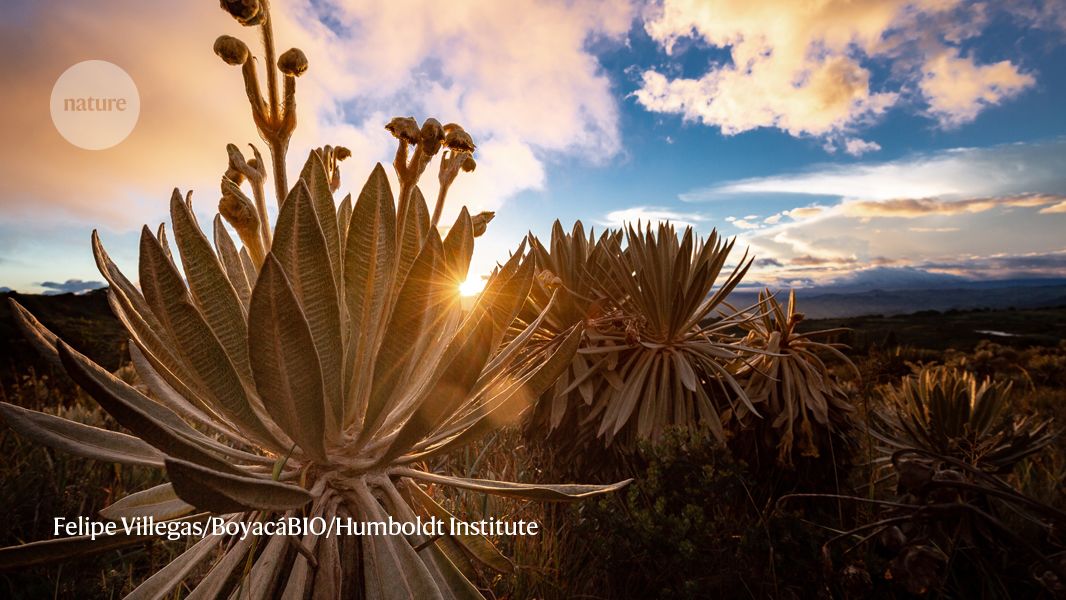When the peace deal opened Colombia up, scientists were not the only groups to take advantage. People returned to tend their land and now, in some places, there are tensions between conservation and farming. In the Sumapaz paramo, government attempts to demarcate a conservation zone have led to disputes.
More-industrialized farming — of oil palm and livestock for example — is spreading. It laps at the edges of the Guásimos forest where Toro lives. Meanwhile, people are making the most of their new-found access to Colombia’s rich supplies of tropical wood, coal, oil and gold. Colombia lost 128,000 hectares of primary forest in 2022. Furthermore, illegal coca plantations are appearing in record numbers.
Meanwhile, violence persists, involving groups such as gangs of ex-combatants, drug traffickers, paramilitaries and those guerrilla groups that have not made peace deals with the government.
“Pretty much every single crisis that you can think about in the world, you have it in Colombia right now,” says Diazgranados.
As a result, research trips can be stressful and require elaborate safeguards. When Diazgranados went to explore a region of El Cocuy National Park in the northeast where, as far as he knows, no scientists had ever been, the government insisted on sending in elite armed forces to the study area two weeks beforehand to prepare the way; then, with two days to go before the trip, another military cordon formed inside the first one.
He and his team of 40 Colombian and international scientists snatched 4 days of collecting before their protection ended, and they had to leave. They found 14 new plant species that Diazgranados thinks are new to science, but he left with a heavy heart: the landscape was not the untouched wilderness he had hoped to find. “The local farmers have been trashing the ecosystem,” he says.
Despite these experiences, scientists do find that their work in the past seven years has seeded a sense of wonder among local people about the plants and animals they live alongside, especially when people discover that they are living in the only place in the world to host some of these species. Some residents have learned scientific skills. When Torres’s phone rings these days, it is often a villager asking for help in identifying a species, or advice on how best to deal in an ecologically sensitive way with problems such as an animal attacking their crops. Sometimes they even want contacts in a government ministry to help to solve some environmental problem, or they have new range information to report for a species studied during Santander Bio.
“They developed an identity,” says Torres of the communities he has met. “And once you have that identity, people are not going to just destroy their habitat — because they have connected with it.”
- Author: Aisling Irwin
- Photo editor: Jessica Hallett
- Art editor: Jasiek Krzysztofiak
- Subeditor: Richard Lim
- Editor: Kerri Smith
Map credits:
- Protected areas: IGAC
- Elevation: GEBCO.
- Species data: https://cifras.biodiversidad.co/colombia
- Ecosystems: Adapted from Fig. 1 of Ref. 2
- Caecilia pulchraserrana photo: Felipe Villegas/SantanderBIO/Humboldt Institute
- Trichomycterus rosablanca photo: Felipe Villegas/ColombiaBIO – Minsciencias/Humboldt Institute
- Atlapetes blancae photo: Gabbro/Alamy
References
- Zhang, C. et al. ISPRS J. Photogramm. Remote Sens. 169, 280–291 (2020).
- Gori, B., Ulian, T., Bernal, H. Y. & Diazgranados, M. Sci. Rep. 12, 7835 (2022).
- Mesa, L. M., Lasso, C. A., Ochoa, L. E. & Donascimiento, C. Biota Colombiana 19 (Suppl. 1), 95–116 (2018).
- Florez, J. S., Cadena, C. D., Donascimiento, C. & Torres, M. Zool. J. Linn. Soc. 193, 772–788 (2021).
Springer Nature






More News
Daily briefing: Why exercise is good for us
Daily briefing: Orangutan is first wild animal seen using medicinal plant
Old electric-vehicle batteries can find new purpose — on the grid